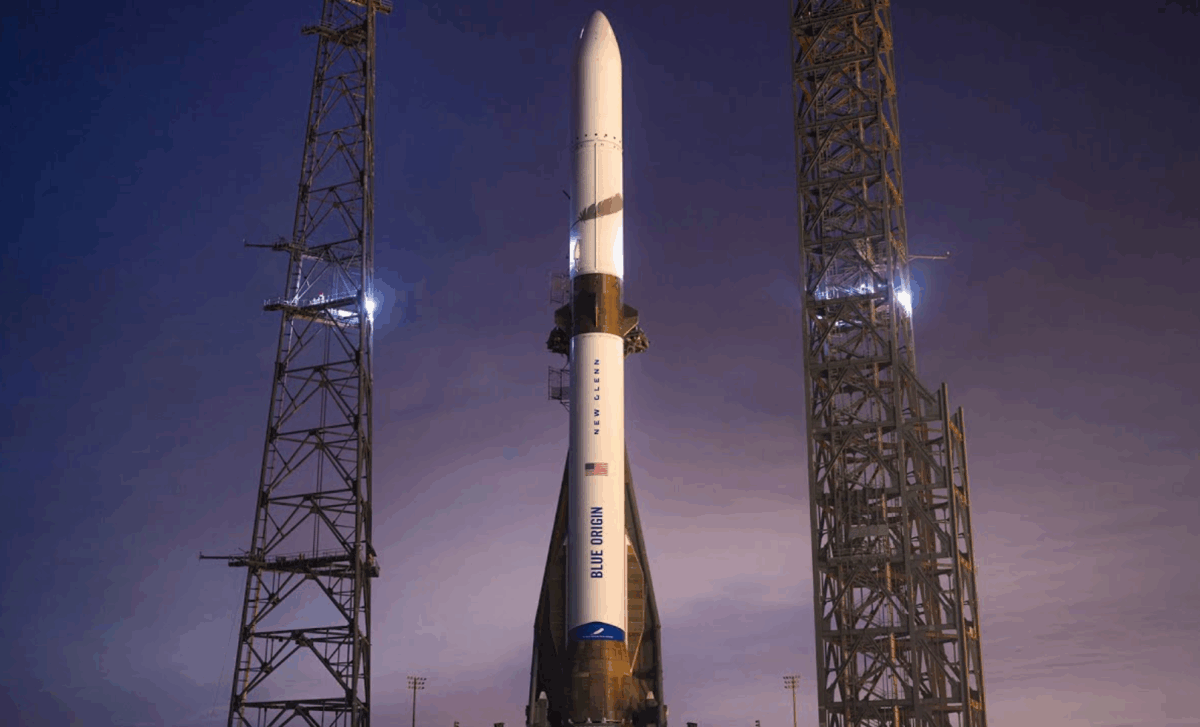In an exciting milestone for space exploration, Blue Origin’s powerful New Glenn rocket is preparing to launch a NASA mission to Mars on November 9, 2025. The ESCAPADE mission, set to study Mars’ atmosphere, will help scientists understand more about the Red Planet’s past and future. As the rocket takes flight, this mission marks a major step in Mars exploration, following a five-year gap since the last Mars mission. Let’s dive into the significance of the launch and what it could reveal about the Martian environment.
The Mission: ESCAPADE and Its Goals
The ESCAPADE (Escape and Plasma Acceleration and Dynamics Explorers) mission is designed to investigate Mars’ atmosphere and space weather. After launching from Earth aboard the New Glenn rocket, the two spacecraft—nicknamed Blue and Gold—will travel to a gravitationally stable point beyond Earth, known as the Earth-Sun Lagrange Point 2 (L2). Once at L2, the probes will spend 12 months studying space weather before embarking on a journey to Mars. These spacecraft, built by Rocket Lab and operated by UC Berkeley, are expected to arrive at Mars in 2027.
During their seven-month orbit around Mars, the ESCAPADE probes will work in tandem, flying in formation to map the planet’s magnetic fields, ionosphere, and upper atmosphere in 3D. This groundbreaking observation will provide a unique stereo view of Mars’ near-space environment, something that has never been done before.
The data gathered from these observations will help scientists piece together the puzzle of how Mars lost its atmosphere over billions of years. Understanding the loss of Mars’ atmosphere is crucial for future exploration, especially as missions to land and potentially settle on Mars move closer to reality. UC-Berkeley researchers stated that the findings will “help scientists understand how and when Mars lost its atmosphere and provide key information about conditions on the planet that could affect people who land or settle on Mars.”
New Glenn Rocket: A Game-Changer for Space Travel
Blue Origin’s New Glenn rocket is an essential component of this mission. Named after astronaut John Glenn, New Glenn is designed to be a heavy-lift rocket capable of delivering significant payloads to orbit. As reported by Space.com, the launch on November 9 will mark New Glenn’s second-ever flight after its successful test flight in January 2025. The rocket is notable for its reusable first stage, which Blue Origin plans to recover by landing it on a ship at sea, just as SpaceX has done with its Falcon rockets.
The ESCAPADE mission’s journey to Mars will require precision and careful timing, taking advantage of a favorable orbital alignment between Earth and Mars that occurs once every 26 months. This alignment, called a launch window, is crucial for the mission’s success. Once the probes reach Mars, they will spend another seven months lowering themselves into orbits that will allow them to gather critical data on the Martian atmosphere. The mission is expected to last for at least 11 months, giving researchers a wealth of data to study.
Incorporating Blue Origin’s cutting-edge rocket technology into a Mars mission opens up new possibilities for space travel, particularly with reusable rockets. New Glenn’s ability to handle massive payloads and its advanced recovery systems may well pave the way for future space missions to the Moon, Mars, and beyond.
What ESCAPADE Will Reveal About Mars’ Atmosphere
The primary goal of ESCAPADE is to unlock the secrets of Mars’ atmosphere, particularly its composition and how it has evolved over time. Mars once had a much thicker atmosphere, but it gradually lost it, which is one of the reasons the planet is so cold and dry today. By studying the atmosphere in 3D, ESCAPADE will be able to shed light on the process that led to this dramatic transformation.
Scientists believe that Mars’ atmospheric loss is linked to its inability to retain water, which could have once been abundant. Understanding the relationship between the planet’s atmosphere and its climate history is essential for understanding its habitability, both in the past and potentially in the future.
The findings from ESCAPADE could also have practical implications for future Mars missions, particularly those focused on human exploration. Understanding the Martian atmosphere’s properties, including radiation levels and potential hazards, will be crucial for ensuring the safety of astronauts who may one day live on Mars.

